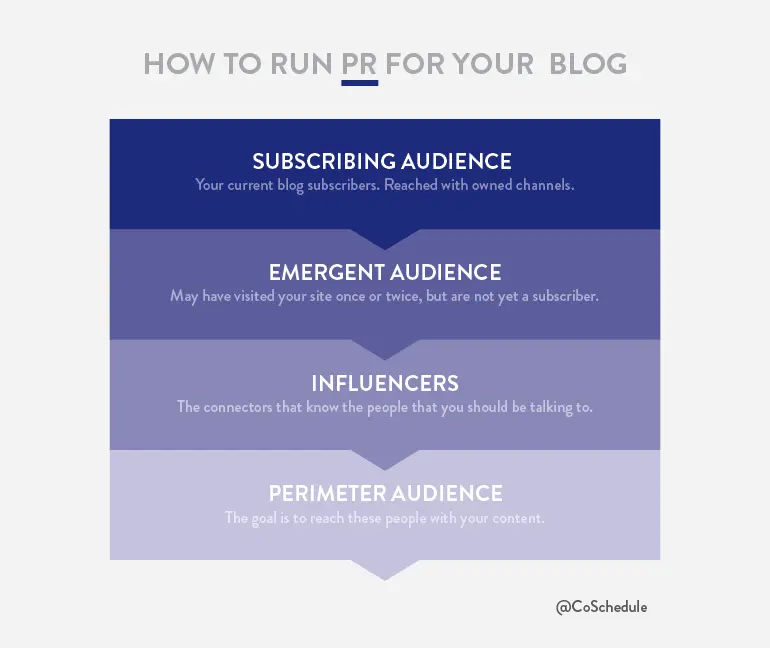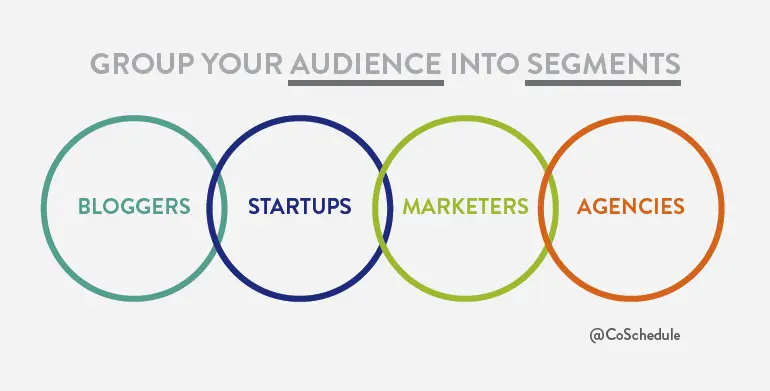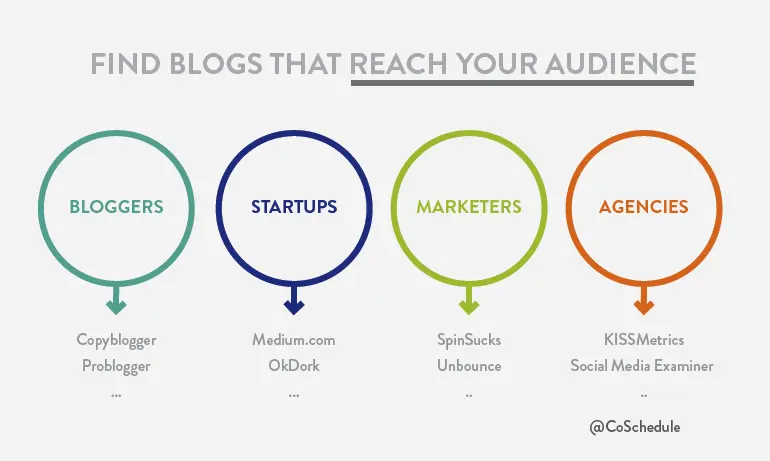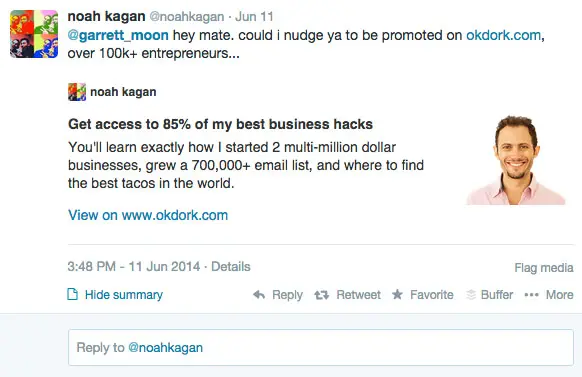How To Promote Your Content Marketing Like A Public Relations Genius
 We all want more visitors, more audience, and more traffic to our blog, but how will they all find us?
These days everyone is creating content, which is only compounding the problem. Isn't it impossible to stand out from the masses and become a high-traffic blog?
It's not impossible–your blog can stand out–but you need to become a public relations (PR) wizard in order to do it.
One of the big secrets to understanding how blogs grow is to know the difference between PR and promotion. Without understanding the difference between the two, the result is wasted efforts to promote and grow your blog that feel random and without a solid strategy. For example, while it may make sense to write a guest post, does it really make sense to write a guest post for that particular blog? And, if I write a guest post for that blog, what topic should I write about for the best advantage?
This is where a clarity between promotion PR comes in handy. Let’s take a look.
We all want more visitors, more audience, and more traffic to our blog, but how will they all find us?
These days everyone is creating content, which is only compounding the problem. Isn't it impossible to stand out from the masses and become a high-traffic blog?
It's not impossible–your blog can stand out–but you need to become a public relations (PR) wizard in order to do it.
One of the big secrets to understanding how blogs grow is to know the difference between PR and promotion. Without understanding the difference between the two, the result is wasted efforts to promote and grow your blog that feel random and without a solid strategy. For example, while it may make sense to write a guest post, does it really make sense to write a guest post for that particular blog? And, if I write a guest post for that blog, what topic should I write about for the best advantage?
This is where a clarity between promotion PR comes in handy. Let’s take a look.
A successful blog is one that knows the difference between PR and Promotion.
Click To TweetThe Difference Between Blog Promotion And PR
Promotion is what we usually think about when we talk about building traffic for our blog. Promotion is:Getting people to read your content by stimulating demand for your content across a variety of channels.On the flip side, PR is:
Getting people to respect what you have to say, and ensuring that the overall company has a strong public image and an abundance of good will.In some ways, blog promotion is about the short(er) term click-throughs and links, where as blog PR is about building a long-lasting reputation as the go-to blog for expert information. For example:
- The Moz Blog as the go-to SEO blog
- Social Media Examiner as the go-to blog for social media
- Copyblogger as the go-to blog for copywriting
- Inbound Hub as the go-to blog for inbound marketing
 Blog promotion is something that we talk about often here at CoSchedule. We advocate several strategies like email marketing, a social media promotion schedule, and repurposing your content, but there is even more to think about. I tend to look at it as four different layers of blog promotion.
1. Owned Channels
The first layer is made of up of your own channels. These might be a huge email marketing list, a great social media presence, and a thorough social media promotion schedule. These are your own channels, and they are only the tip of the iceberg for promoting your content.
2. Earned Channels
The earned channel is made up of the various social sharing done by your audience. This includes social media shares, nomination style distribution outlets like Inbound.org or Buffer Daily, and link-backs from other bloggers. This is primarily driven by high quality content that is easy to share.
3. Paid Channels
While often ignored, paid promotion channels can bring a good boost to any blog, and are a good means of promotion. Great examples of this include Facebook, Twitter, StumbleUpon and Reddit.
4. Syndication Channels
Reposting (or repurposing) your content on other sites is also a great promotion strategy. Examples of this include allowing your content to be reposted on another blog, or recreating content in a new form such as SlideShare are podcast topic.
Blog promotion is something that we talk about often here at CoSchedule. We advocate several strategies like email marketing, a social media promotion schedule, and repurposing your content, but there is even more to think about. I tend to look at it as four different layers of blog promotion.
1. Owned Channels
The first layer is made of up of your own channels. These might be a huge email marketing list, a great social media presence, and a thorough social media promotion schedule. These are your own channels, and they are only the tip of the iceberg for promoting your content.
2. Earned Channels
The earned channel is made up of the various social sharing done by your audience. This includes social media shares, nomination style distribution outlets like Inbound.org or Buffer Daily, and link-backs from other bloggers. This is primarily driven by high quality content that is easy to share.
3. Paid Channels
While often ignored, paid promotion channels can bring a good boost to any blog, and are a good means of promotion. Great examples of this include Facebook, Twitter, StumbleUpon and Reddit.
4. Syndication Channels
Reposting (or repurposing) your content on other sites is also a great promotion strategy. Examples of this include allowing your content to be reposted on another blog, or recreating content in a new form such as SlideShare are podcast topic.
 Blog PR is an entirely different process than promotion with a very different goal.
Blog PR tends to focus on the long term strategy. I like to think of it like this: blog promotion aims for clicks, shares, and traffic, while PR aims for expertise, trust, and good will. It may sound hard put into action, but it really isn’t. The layers of PR can be broken down into different audience groups like the following:
1. Subscribing Audience
The first layer in your PR strategy is definitely your current audience. This should be easy, since they are already “true believers.” You will primarily reach this group with your owned channels, and you job is basically to just not screw things up.
2. Emergent Audience
The second layer of PR is made up of the “sometimes" audience members that are familiar with you, but haven’t become a “true believer” yet. These members may have visited your site once or twice, but are not yet a subscriber. These are a common audience type for content marketing, as explained here by Rand Fishkin.
3. Influencers
The influencers layer is made up of the connectors that already know and are connected with the people you should be talking to. You need to cross-pollinate with these groups. Influencers help you bridge the gap between yourself and new audiences. This can be accomplished through strategic partnerships, and even the “expert” posts that bring influencers together.
4. Permitter Audience
I am going to dig into this strategy a bit more later on, but the permitter audience is composed of various audience segments that you ultimately want to reach. A lot of people talk about how to understand your audience in blogging, but they don’t always discuss how to reach these people in a practical way. This is where a strong guest blogging strategy comes into play.
Blog PR is an entirely different process than promotion with a very different goal.
Blog PR tends to focus on the long term strategy. I like to think of it like this: blog promotion aims for clicks, shares, and traffic, while PR aims for expertise, trust, and good will. It may sound hard put into action, but it really isn’t. The layers of PR can be broken down into different audience groups like the following:
1. Subscribing Audience
The first layer in your PR strategy is definitely your current audience. This should be easy, since they are already “true believers.” You will primarily reach this group with your owned channels, and you job is basically to just not screw things up.
2. Emergent Audience
The second layer of PR is made up of the “sometimes" audience members that are familiar with you, but haven’t become a “true believer” yet. These members may have visited your site once or twice, but are not yet a subscriber. These are a common audience type for content marketing, as explained here by Rand Fishkin.
3. Influencers
The influencers layer is made up of the connectors that already know and are connected with the people you should be talking to. You need to cross-pollinate with these groups. Influencers help you bridge the gap between yourself and new audiences. This can be accomplished through strategic partnerships, and even the “expert” posts that bring influencers together.
4. Permitter Audience
I am going to dig into this strategy a bit more later on, but the permitter audience is composed of various audience segments that you ultimately want to reach. A lot of people talk about how to understand your audience in blogging, but they don’t always discuss how to reach these people in a practical way. This is where a strong guest blogging strategy comes into play.
How Audience Building Really Works
Looking at the layers of PR above, it is pretty easy to see how a blog audience growth works. The big idea here is to turn permitter audience members into subscribing audience members by working them through the PR process. A great way to do this is with a strategic guest blogging strategy...by guest blogging. Here’s how. First, group your audience into a set of audience segments. If you need to better understand your audience, there are many ways that you can learn about them using things like Google analytics and other methods. As example of this can been seen in a few audience segments that we have here at CoSchedule. These audience segments could be considered your ‘permitter audience.'
Once you have your audience segments identified, you need to find blogs that are already serving these groups. These are the influencers that I mentioned above. They will be able to connect you with the people that you really want to talk to.
These audience segments could be considered your ‘permitter audience.'
Once you have your audience segments identified, you need to find blogs that are already serving these groups. These are the influencers that I mentioned above. They will be able to connect you with the people that you really want to talk to.
 From there, begin reaching out the appropriate blogs, and provide them with awesome content that will both benefit their audience and help grow yours. It should begin to look like a wheel.
From there, begin reaching out the appropriate blogs, and provide them with awesome content that will both benefit their audience and help grow yours. It should begin to look like a wheel.
 Each guest post will connect you to these audiences, and help define your PR strategy. Since you are not being paid to blog, you will be building good will and recognition with the very audience that you are hoping to serve as subscribers.
While this isn’t a ‘get tons-of-emails quick’ strategy, it is definitely a great way to grow your influence and your long term growth. As your permitter audience is exposed to you over and over again, you will build the trust and pull necessary for them to look into what you have to offer.
Each guest post will connect you to these audiences, and help define your PR strategy. Since you are not being paid to blog, you will be building good will and recognition with the very audience that you are hoping to serve as subscribers.
While this isn’t a ‘get tons-of-emails quick’ strategy, it is definitely a great way to grow your influence and your long term growth. As your permitter audience is exposed to you over and over again, you will build the trust and pull necessary for them to look into what you have to offer.
Strategic blog partnerships are a requirement if you want to grow your blog.
Click To TweetUse Blog Partnerships To Grow Your Blog
Another great way to put this PR strategy to work is through strategic blog partnerships. We recently completed one of these with OKDork.com, sharing some of our hard earned data with a very analytics-hungry audience. It was a great fit. We were able to share content that was far more appropriate for their subscribing audience than ours, and we were even able to use the same data (with a different spin of course) on our own blog. It even inspired a great guest post on Buffer’s social media blog. Partnerships for the win! Blogger Neil Patel outlines a great strategy for leveraging influencers like this. Here are his steps, but do read the full post.- Create a list of influential bloggers in your industry. Your goal is to generate anywhere from 50 to 500 people who blog or talk about your core topics. Neil advocates outlining these bloggers in a spreadsheet.
- Now find the bloggers' social media profiles and add them to your spreadsheet. If you find email addresses, add that as well.
- Categorize your list according to that relationship's value to your business. Neil uses an A, B, C formula with A equalling his highest value contacts. I would suggest that you categorize them by your chosen audience segments.
- Network with these bloggers on a regular basis. Link to them, follow them on Twitter, connect, subscribe, and comment. Build a relationship first.
- Send a personal email to a high-value contact. Only send them information you feel will be particularly interesting to them, and only about subjects that are relevant to them. A sample email from Neil is included in his post, but I advocate a slightly different approach below.
 The thing that you have to remember with this approach is that the way you attempt to create these relationships is PR, too. We are trying to build goodwill, not just a link-back or a quick tweet. The more relationships you build, the better they will sever you in the long term, and that’s always good for PR.
The thing that you have to remember with this approach is that the way you attempt to create these relationships is PR, too. We are trying to build goodwill, not just a link-back or a quick tweet. The more relationships you build, the better they will sever you in the long term, and that’s always good for PR.


